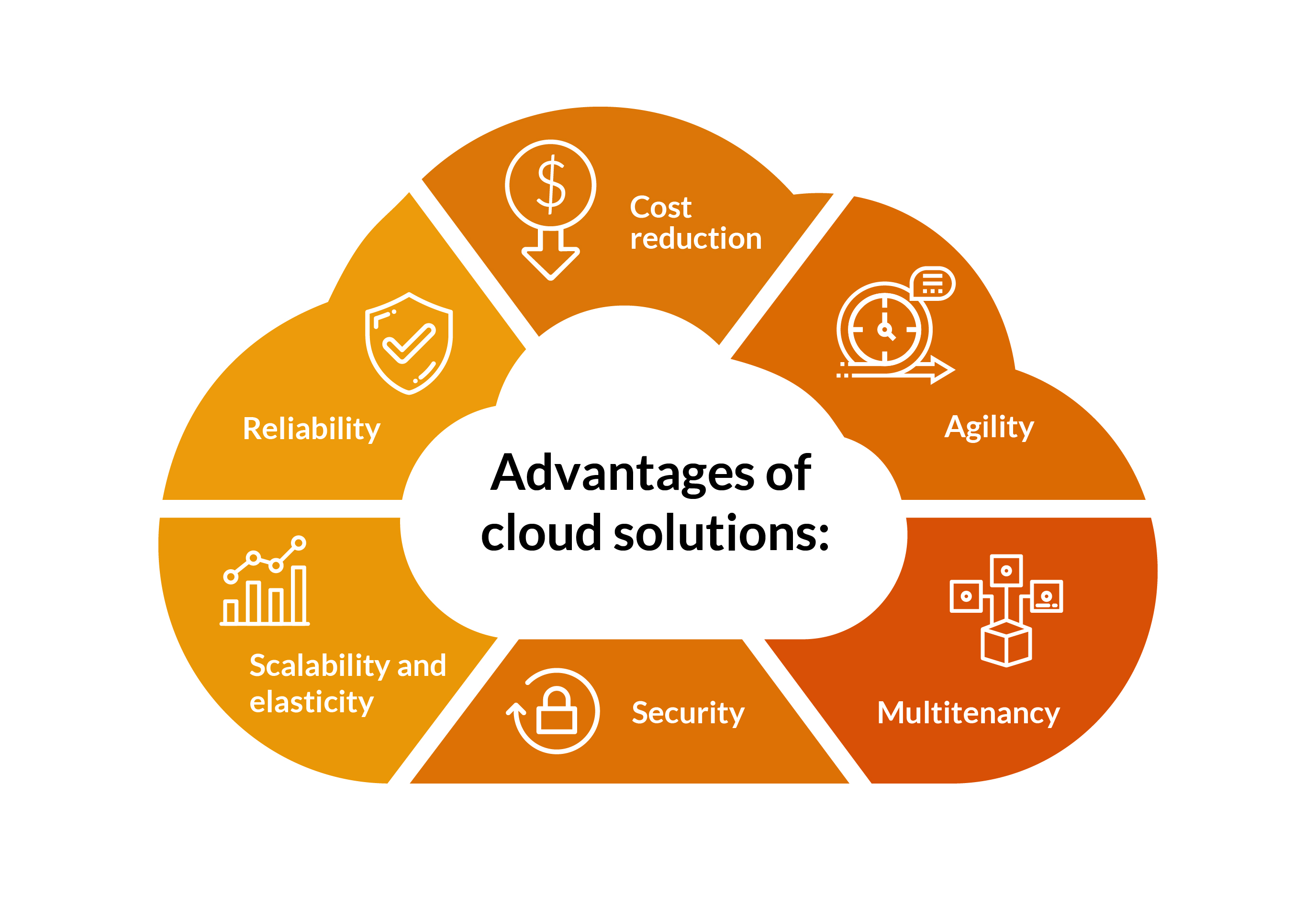Utilizing the Possible of Cloud Services for Competitive Side on the market

Advantages of Cloud Services

Cost-efficiency is one more considerable advantage of cloud services, as companies can stay clear of huge in advance financial investments in hardware and software. Overall, the benefits of cost-efficiency, versatility, and scalability make cloud services a valuable asset for business seeking a competitive edge in today's vibrant market landscape.
Cloud Movement Approaches
Cloud movement calls for meticulous planning and smooth implementation to guarantee a smooth change of digital possessions to cloud-based atmospheres. One common strategy is the "Raise and Change" approach, where existing systems are relocated to the cloud without substantial alterations.
Additionally, the "Replatforming" technique involves making small changes to applications to maximize their efficiency in the cloud atmosphere. This approach strikes an equilibrium in between rate and optimization, permitting companies to benefit from cloud capabilities while lessening interruptions.
For more facility systems, the "Refactoring" strategy, also called "rearchitecting," entails revamping applications to be cloud-native. While this method requires more time and resources, it can optimize the advantages of scalability, versatility, and cost-efficiency that cloud systems use.
Ultimately, selecting the ideal cloud movement method depends on variables such as the organization's goals, spending plan, timeline, and technological demands. By thoroughly evaluating these considerations, organizations can efficiently change to the cloud and obtain an one-upmanship in the market.
Enhancing Information Security Measures
After applying cloud movement techniques, organizations need to focus on boosting information protection gauges to guard their digital properties efficiently. Data security is critical in the digital age, particularly when leveraging cloud solutions that entail sending and keeping sensitive details. To boost data safety and security, companies need to take into consideration implementing file encryption techniques to safeguard information both at rest and in transit. File encryption makes certain that also if unauthorized events access the data, it continues to be unintelligible and unusable. Furthermore, implementing multi-factor verification adds an extra layer pop over here of safety by calling for individuals to supply several kinds of verification prior to accessing delicate information.
Regular safety and security audits and vulnerability evaluations are necessary to identify and address any weak factors in the data safety and security facilities without delay. Training employees on finest practices for information safety and security and imposing stringent accessibility controls can additionally mitigate the threat of interior data violations. By investing in robust information safety and security measures, organizations can instill count on among their clients and stakeholders, inevitably getting a competitive edge out there.
Leveraging Cloud for Scalability
Executing cloud services allows companies to dynamically adjust resources according to demand, boosting scalability and enhancing functional efficiency. Scalability in the cloud context refers to the capability to rapidly and conveniently increase or lower resources as required, providing businesses with the versatility to meet altering requirements.
Moreover, leveraging cloud scalability enables services to react promptly to market fluctuations, seasonal demands, or unforeseen development, making sure uninterrupted service shipment without sustaining unnecessary expenses. By scaling sources up or down in real-time, organizations can preserve optimal performance degrees while managing expenses. Scalable cloud services equip firms to introduce swiftly, release new applications effectively, and adjust to advancing service requirements with agility. Generally, accepting cloud scalability is a calculated move that cultivates competition and settings companies for sustainable growth in today's vibrant market landscape.

Executing Cloud-Based Cooperation
Cooperation in modern-day service environments has undertaken a substantial makeover through the integration of cloud-based modern technologies. Cloud-based collaboration tools have actually revolutionized the means teams work with each other, offering real-time communication, record sharing, and task management capabilities regardless of physical location. By executing cloud-based partnership solutions, companies can improve efficiency, boost efficiency, and simplify operations.
One of the key benefits of cloud-based collaboration is its ability to break down interaction obstacles among group participants. With features like instant more information messaging, video clip conferencing, and digital white boards, staff members can collaborate seamlessly and stay linked despite where they are situated. Cloud-based partnership tools facilitate easy access to shared documents and sources, making it possible for team members to function together on projects in a synchronous way.
Furthermore, cloud-based cooperation promotes flexibility and agility within organizations by making it possible for remote job and cultivating cross-functional team effort. Staff members can work together in real-time, share comments quickly, and choose collectively, causing quicker problem-solving and improved development. Generally, applying cloud-based collaboration is important for modern-day companies wanting to stay affordable in today's interconnected and busy market landscape.
Final Thought
To conclude, the use of cloud services offers countless advantages for companies looking for a competitive edge in the marketplace. By executing cloud movement strategies, boosting information security procedures, leveraging my website scalability, and making use of cloud-based cooperation, services can enhance effectiveness, reduce costs, and stay in advance of the competition. Accepting the potential of cloud services is crucial for organizations aiming to do well in today's swiftly progressing organization landscape.
The ability to harness the potential of cloud solutions uses services various advantages, from raised dexterity and scalability to improved collaboration and information protection. As companies browse the complexities of cloud movement and check out innovative ways to take advantage of cloud technology, the concern emerges: How can businesses successfully use cloud services to not just maintain up with however likewise exceed their rivals in the vibrant industry?
In addition, the flexibility supplied by cloud services allows organizations to gain access to data and applications from anywhere, promoting remote job and cooperation among groups found in various geographical places. - Cloud Services
By implementing cloud migration strategies, improving information safety and security measures, leveraging scalability, and using cloud-based collaboration, services can boost efficiency, minimize costs, and stay in advance of the competition. Accepting the possibility of cloud services is essential for organizations looking to do well in today's quickly developing business landscape.